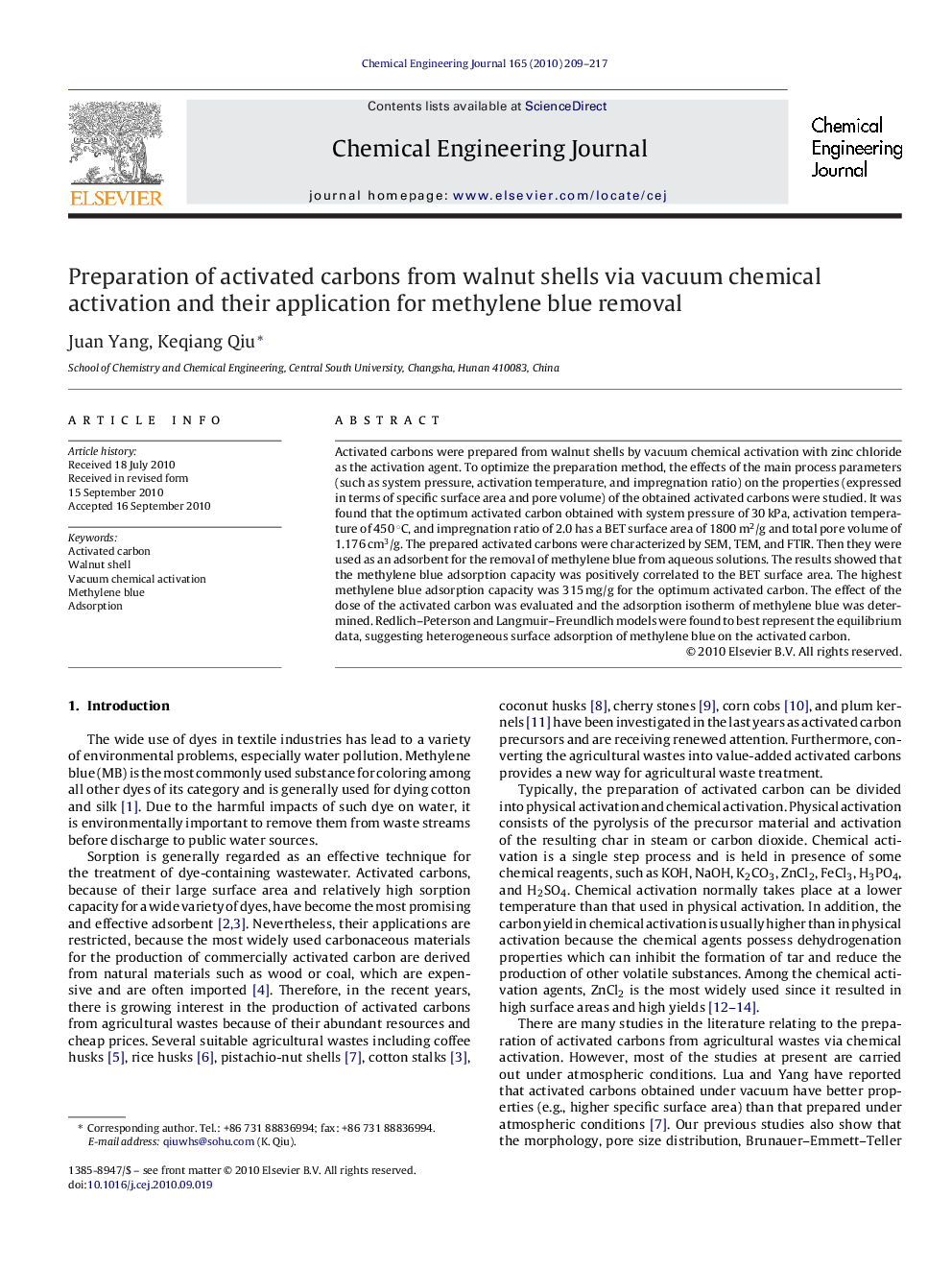| Article ID | Journal | Published Year | Pages | File Type |
|---|---|---|---|---|
| 152017 | Chemical Engineering Journal | 2010 | 9 Pages |
Activated carbons were prepared from walnut shells by vacuum chemical activation with zinc chloride as the activation agent. To optimize the preparation method, the effects of the main process parameters (such as system pressure, activation temperature, and impregnation ratio) on the properties (expressed in terms of specific surface area and pore volume) of the obtained activated carbons were studied. It was found that the optimum activated carbon obtained with system pressure of 30 kPa, activation temperature of 450 °C, and impregnation ratio of 2.0 has a BET surface area of 1800 m2/g and total pore volume of 1.176 cm3/g. The prepared activated carbons were characterized by SEM, TEM, and FTIR. Then they were used as an adsorbent for the removal of methylene blue from aqueous solutions. The results showed that the methylene blue adsorption capacity was positively correlated to the BET surface area. The highest methylene blue adsorption capacity was 315 mg/g for the optimum activated carbon. The effect of the dose of the activated carbon was evaluated and the adsorption isotherm of methylene blue was determined. Redlich–Peterson and Langmuir–Freundlich models were found to best represent the equilibrium data, suggesting heterogeneous surface adsorption of methylene blue on the activated carbon.
